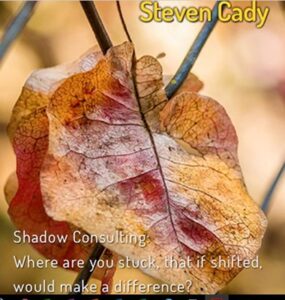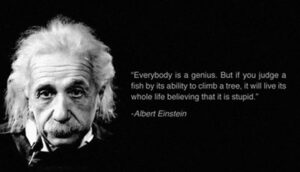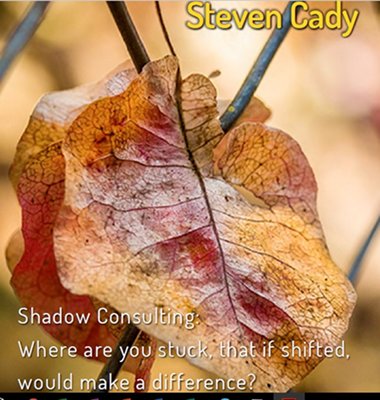 Shadow consulting – have you ever done it? It’s not the dark side of consulting. It’s something that consultants may do too little… It’s consulting with another consultant to help you do a better job in consulting.
Shadow consulting – have you ever done it? It’s not the dark side of consulting. It’s something that consultants may do too little… It’s consulting with another consultant to help you do a better job in consulting.
Official definition: a shadow consultant denotes a consultant who, at the request of a colleague and by means of a series of mutual discussions in which he uses a socio-scientific approach, helps evaluate and, if necessary, change the diagnosis, tactics, or role adopted in a certain assignment.
Are you busy? Do you use shadow consulting? Especially when you work at a small consulting firm or if you are self-employed – you may work too hard, all by yourself. That goes for leaders and other professionals as well.
Simply because we’re too busy to stop – observe – reflect – or even consider the possibility of getting someone else involved – a benign but truthful coach, a different mind, another perspective to help us see what happens right in front of us. We tend to push through alone.
Shadow consulting

“Never work alone,” says Dr. Steven Cady, a professor at Bowling Green State University: “You need a wider perspective.” We nod in agreement. We’re a room full of Organization Development & Change scholars and practitioners. (It’s the bi-annual conference of the International Society of Organization Development & Change, in Amsterdam).
I recognize this position well: the lonesome, too-hard-working professional who wonders “Hey, am I the only one who sees that… [fill in the blank]?” I also recognize the relief of sound boarding with a colleague: “Do you notice, too, that… [fill in]? What do you think?” And, getting their point of view, the big AHA – never thought that could be possible, too. A different viewpoint. Another assumption or possibility. Not just my mind – seeing things in my Marcella-way.
I also recognize the pressure of everyday working life. You’re busy enough as it is. I, nor you, have time to sit down together or even plan some time to talk on Skype. We carry on – rushing to our next assignments – back to our teams – because everyone is to busy.
Being aware of the limitations of being me – I always try to work with at least two consultants on the same project. But it’s not always realistic for various reasons (the usual timing and budgetary challenges).
The best way is to work together, to both observe directly and analyze and interpret the signals and impressions you get from an organizational system. But if that can’t be done, why not find a buddy and use shadow consulting?
 Steven challenged us: “You are not alone! Just ask.” Your first question to explore is:
Steven challenged us: “You are not alone! Just ask.” Your first question to explore is:
Where are you stuck, what is your dilemma, that if shifted would help you, your client, your…[something that matters]?
The purpose of shadow consulting is to broaden the possibilities for what can be, to expand pathways, provide support, to gain practical solutions that can shift, get unstuck, enrich, advance…
Let’s be honest: is there a limit to the enrichment, the possibilities, the support you could use? Let’s not be arrogant know-it-alls who consider themselves to be seasoned consultants or senior leaders. Every human being can benefit from another perspective, from support, from new pathways.
Diverse sources and styles

Next, who should be involved in shadow consulting? It’s great to consider experts you know, but keep an open eye for diverse styles as well. As Einstein said: “Everybody is a genius. But if you judge a fish by its ability to climb a tree, it will live its whole life believing that it is stupid.” Sometimes the best consultants can’t give you the nudge you need – but your mother can – or the homeless person on the street corner, or the janitor.
Thinking of diverse styles, Steven offers the native American medicine wheel as an example. But you can choose any methodology or tool that you like to discern styles. Staying native American, consider archetypical elements, such as:

East – the warrior – someone who gets things done
South – the lover – someone who cares
West – the magician – someone who knows to play the game
North – the king – someone who leads the way
You can select people who can offer the perspective, the insight, the nudge or the hug you need to un-stick your issue, whether you call it shadow consulting, coaching or chatting. During the conference it was great to work with groups of three people: three open the windows to the world – where two is just a one-on-one, somehow. But you can organize it any way you like for yourself.
Listen, notice, ask!
Important for the shadow consultant is to listen – notice – offer. It’s a standard operating procedure for coaches: to listen mindfully, to notice carefully and to ask permission if you want to give advise… “60% of issues is solved by listening and noticing”, says Steven Cady. “The point is to make the system self-aware.”
 But it’s not always easy to do. I noticed some of my fellows simply telling each other what to do in their situation… Here we are again, in our culture of telling – and not asking. (See issue 9 – the summary of Edgar Schein’s book “Humble Inquiry”). When in telling mode, we hope to educate, impress, and entertain (and dominate). Ed Schein wrote: “I suspect we all do more telling than we should.” Yes, we tend to take our own world views for reality. So we give advice and tell others what to do… Shall we ask more? And appreciate asking? Nobody knows everything – isn’t that ignorance and arrogance? So, why not ask a shadow consultant to reflect what they see in your project?
But it’s not always easy to do. I noticed some of my fellows simply telling each other what to do in their situation… Here we are again, in our culture of telling – and not asking. (See issue 9 – the summary of Edgar Schein’s book “Humble Inquiry”). When in telling mode, we hope to educate, impress, and entertain (and dominate). Ed Schein wrote: “I suspect we all do more telling than we should.” Yes, we tend to take our own world views for reality. So we give advice and tell others what to do… Shall we ask more? And appreciate asking? Nobody knows everything – isn’t that ignorance and arrogance? So, why not ask a shadow consultant to reflect what they see in your project?
Marcella Bremer is an author and culture & change consultant. She co-founded this blog and ocai-online.com.

2 Responses
Due to limitations with human perception, the idea of using a “shadow consultant” sits well with me, constraints aside……in terms of “two heads are better than one” approach to problem solving. This quote from Einstein is pure genius, “if you judge a fish by its ability to climb a tree, it will live its whole life believing that it is stupid.”
hi thanks for the posts